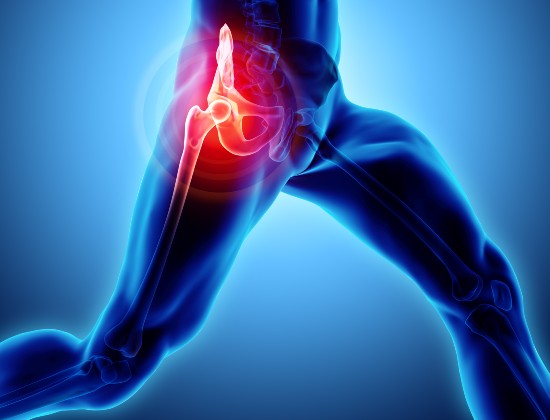Hip dysplasia
What is it?
The hip is a ‘ball and socket’ joint. Hip dysplasia, also known as acetabular dysplasia, or developmental dysplasia of the hip (DDH), is when the socket (acetabulum) doesn't develop properly, leaving it shallow and more upwardly sloping than usual.
Causes
Dysplasia results from the hip joint developing abnormally during childhood. This puts greater load through the socket, causing tears in the acetabular labrum and, in severe cases, instability. Dysplasia also puts more stress on the cartilage of the hip socket, causing damage and leading to arthritis. Hip dysplasia is ten times more common in females than males, and often runs in families.
What are the symptoms?
The symptoms are very similar to those of femoral acetabular impingement (FAI) and can include:
- Groin pain which can also felt towards the outside of the hip, or in the buttock
- Gradual reduction in the ability to exercise, particularly running, exercise classes and sports involving pivoting and twisting
- Stabbing pain when twisting, turning, getting up from a chair or squatting – often associated with a dull ache/li>
- Pain after you have been sitting down for a long time such as when driving or sitting in a confined space such as at the cinema or on a plane
- A feeling of your hip ‘giving way’, and finding it hard to walk long distances/long periods of time
In most cases, patients who come to the Fortius Clinic with hip dysplasia problems are women aged 20-40 who have experienced groin pain following a minor injury, and about half of these have experienced a feeling of their hip giving way. In some cases, they may already have had childhood treatment for hip dysplasia.
Diagnosis
A discussion of your symptoms and a medical examination is usually backed up by X-rays, CT scans and MRI scans to confirm the diagnosis.
How is it treated?
Hip dysplasia is usually treated with periacetabular osteotomy (PAO), which involves changing the position of the hip socket so that it covers more of the femoral head (ball). This procedure is extremely effective at relieving pain and instability. In very mild cases, there may be a selective role for hip arthoscopy to repair the torn labrum. However, when arthritis has developed as a result of dysplasia, resulting in symptoms that affect your everyday life, having a total hip replacement may be the best option. Your consultant will be able to advise you about which treatment is best for you.
Important: This information is only a guideline to help you understand your treatment and what to expect. Every person is different and your rehabilitation may be quicker or slower than other people’s. Please contact us for advice if you are worried about any aspect of your health or recovery.


